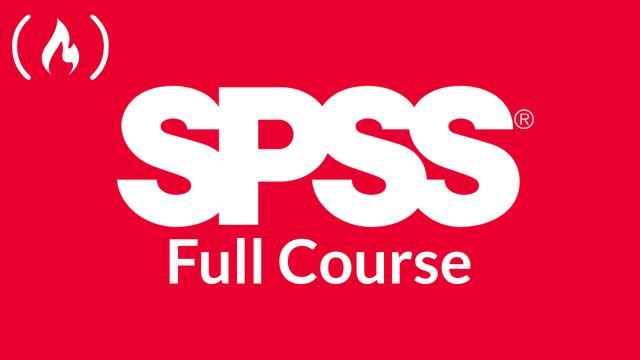Complete List of MS-DOS Commands
3324
30/11/2021

SPSS Statistics is a software package used for interactive, or batched, statistical analysis.
We just released a full course on the freeCodeCamp.org YouTube channel that will teach you how to use the popular statistical application SPSS from IBM.
This course provides a concise overview of how you can use SPSS to explore and analyze your data for actionable insights.
Barton Poulson developed this course. Barton is a university professor and data scientist.
Here are the sections in this course:Introduction Versions, Editions, & Modules Taking a Look Sample Data Graphboard Templates Bar Charts Histograms
Scatterplots Frequencies Descriptives Explore Labels & Definitions Entering Data Importing Data Hierarchical Clustering Factor Analysis Regression Next Steps Watch the full course on the freeCodeCamp.org YouTube channel (2-hour watch).
Transcript (autogenerated) You are about to learn about the popular statistical application SPSS from IBM.This course from university professor Burton Paulson will show you how you can use SPSS to explore your data for actionable insights. Welcome to SPSS an introduction. I'm Martin Paulson.
And in this course, we're going to look at these statistical program SPSS and some of its basic functionality, and give you an idea of what it can do and how well it might work in your own data work. Now, SPSS, the name deserves a little bit of explanation. Once upon a time, it stood for a statistical package for the social sciences. Now it's just SPSS. But that's its origin. One important thing to know is how popular SPSS is. Here's a chart right here that comes from the excellent website are for stats.com.And what it shows is
the number of scholarly articles published in 2015, using various statistical packages and languages. And we can see here is right at the top is SPSS Statistics. SPSS is number one, by far in terms of scholarly research. Also, you can look at jobs.And it's easy to save and reuse the syntax, giving you a code basis for the work that you do within SPSS.The first thing we need to talk about in SPSS and introduction is setting up and getting ready to do the work.
To do that, however, we need to take a minute and talk about versions, additions and modules, which all refer to different kinds of things in SPSS.
The choice is really making me think of an overwhelming a plethora of possibilities ahead of you.

So let's go back to that dialog, I'll go to explore.
What I'm going to do is I'm going to say, just give me the statistics right now.
And I'll come up here, and I'll make some selections.
One thing, although 95% confidence intervals are by far the most common, I have seen significant situations where people use 80% confidence interval, so you can change it if you want.
Then I can get all of the estimators.
It's a whole collection, I can get a list of outliers and a list of percentile values.
I hit Continue.
And I click OK.
And now we have the same table we had before.
That's their descriptives up their top, then we have the M estimators.
And this is for different robust measures of center.
Again, all of them are trying to give us something equivalent to the mean.
And you see in this case, huber's estimator, turkeys by weight handles, estimator, and Andrews wave, the numbers are al
